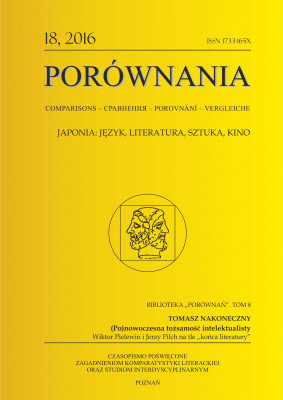”Living ghosts” (ikiryō) as the contents of subconsciousness in Kafka on the shore by Murakami Haruki
‘Ghosts of a living person’ (ikiryō) as the content of Subconsciousness in Murakami Haruki’s Kafka on the Shore The authoress analyses the image of ikiryō, ‘ghost of a living person’ in Murakami Haruki’s novel titled Kafka on the Shore trying to prove that ikiryō can be regarded as the manifestation of various contents of Subconsciousness according to the psychoanalytic typology presented by Carl Gustav Jung. The image of ikiryō can be found in Japanese mythology and folklore which is in accord with Jung’s statement that legends and myths represent expressions of collective Subconsciousness and provide important symbols. Such symbols can be helpful in the process of transferring the contents of the Subconsciousness into the consciousness, so that they could be interpreted and integrated. The authoress shows that ikiryō in Murakami’s novel has two main meanings: it is an equivalent of both the archetype of the Shadow and traumatic contents of consciousness, which were driven out to the Subconsciousness. Murakami emphasizes that without integrating such traumatic contents, the personality cannot be strong and stable. Ikiryō is also the Shadow as the absolute evil, which is not an abstract notions but psychic energy related to emotions. Psychic energy cannot be fully controlled by subjective consciousness because it also belongs to the Subconsciousness. The psychological situation of an individual who has no will to resist their own evil inclinations is represented in the archetype of the Shadow as ikiryō – ‘the ghost of a living person, who cannot be controlled when it leaves the sleeping body and torments people he hates.
| Article Title | Type | Size |
|---|---|---|
| 07 Agnieszka Kozyra | [pdf] | [300 KB] |
